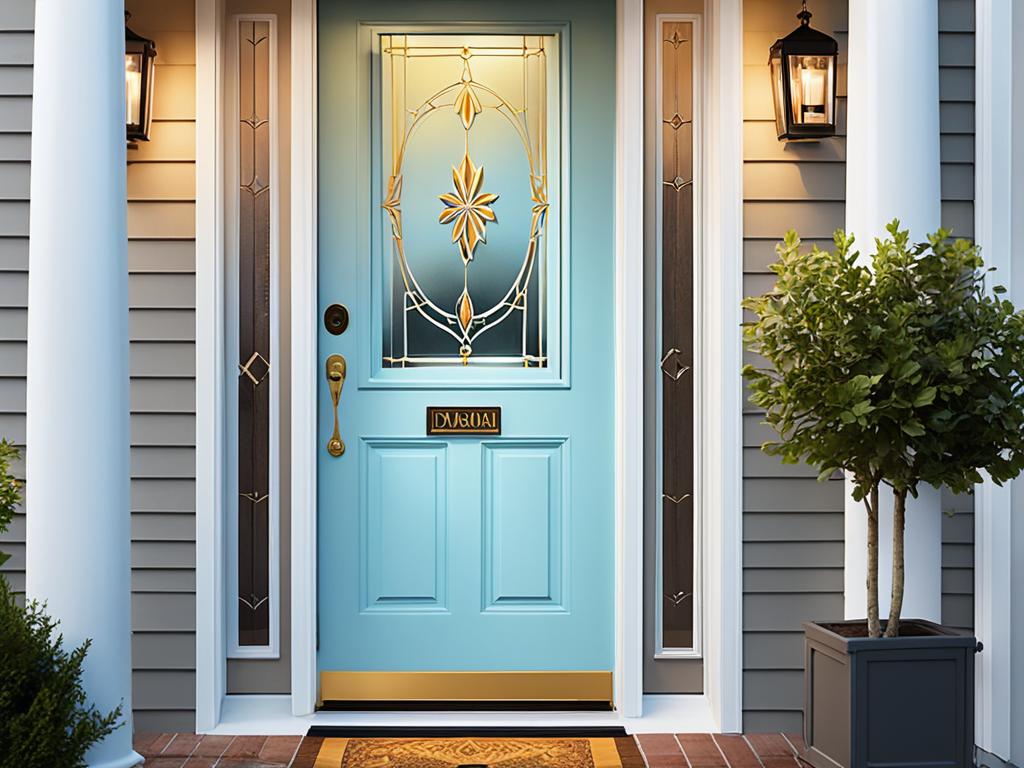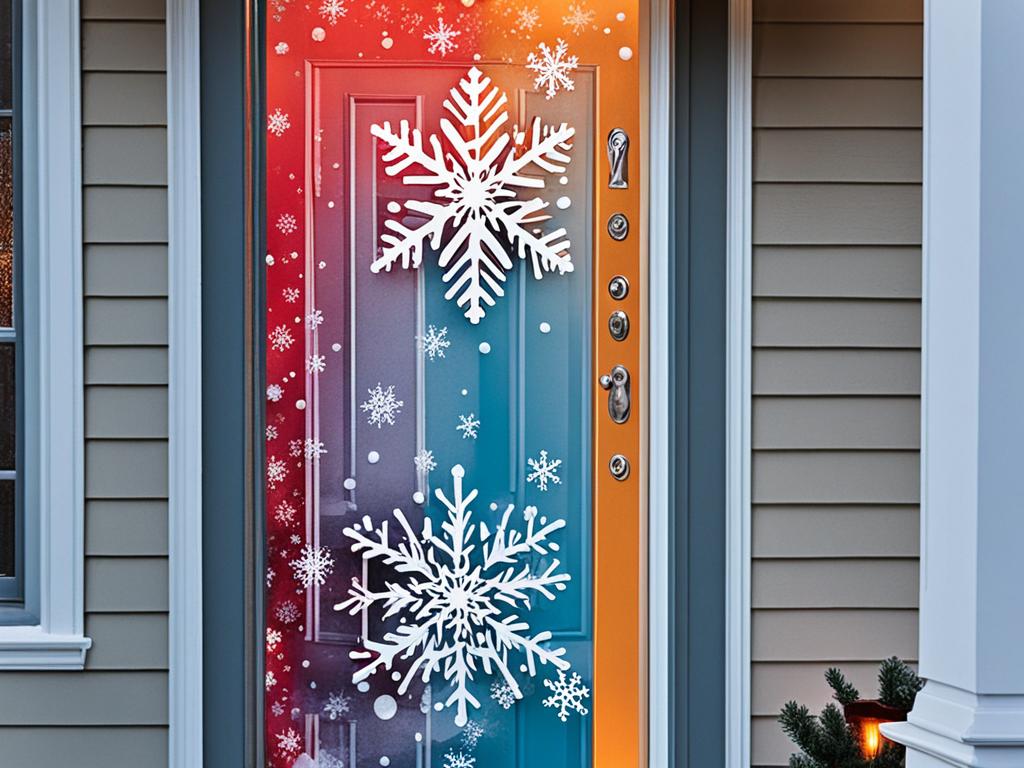When it comes to maintaining a comfortable and energy-efficient home, door seals play a crucial role. But with various options available, such as door sweeps and door seals, it can be confusing to know which one is the right choice for your needs. In this article, we will explore the difference between door sweep and door seal, their effectiveness in weatherproofing, and how to choose the best option for energy efficiency.
Door sweeps are typically used on the bottom of doors to create a seal and prevent drafts. They are designed to glide smoothly over different floor surfaces, ensuring minimal air leakage. On the other hand, door seals are more versatile and can be installed around the entire door frame to provide a more comprehensive seal against air infiltration.
One common misconception is that door sweeps and weatherstripping are the same. While they both serve the purpose of preventing air leakage, weatherstripping is a broader term that encompasses various sealing materials used to seal gaps around doors and windows. Door sweeps and door seals are specific types of weatherstripping designed for doors.
When it comes to energy efficiency, both door sweeps and door seals play a vital role. They help prevent air leaks, reduce drafts, and improve insulation, resulting in lower energy consumption and increased comfort. By keeping the cold air out during winter and the hot air out during summer, these seals make your home more energy-efficient and save you money on heating and cooling bills.
So how do you choose between a door sweep and a door seal? Consider factors such as the location of the door, the size of the gap you need to seal, and the level of insulation required. If you have a significant gap at the bottom of the door, a door sweep may be the most effective solution. However, if you want a more comprehensive seal that prevents air leakage from all sides of the door, a door seal is the better option.
It’s essential to select high-quality materials for both door sweeps and door seals to ensure durability and effectiveness. Proper installation is also crucial to ensure a tight seal. Regular inspections and maintenance, including cleaning the seals, will help prolong their lifespan and maintain their efficiency.
Key Takeaways:
- Door sweeps and door seals are both effective in preventing air leaks and improving energy efficiency.
- Door sweeps are typically used for the bottom of the door, while door seals provide a more comprehensive seal around the entire door frame.
- Consider factors like the location of the door, size of the gap, and level of insulation required when choosing between a door sweep and a door seal.
- Invest in high-quality materials and proper installation for optimal performance.
- Regular inspections and maintenance will help prolong the lifespan and efficiency of door sweeps and door seals.
Maximizing Air Circulation: Key Benefits of Quality Door Seals
Proper air circulation is vital for maintaining a healthy and comfortable indoor environment. Quality door seals play a significant role in maximizing air circulation by preventing air leaks and drafts. They enhance energy efficiency, improve indoor air quality, reduce noise transmission, and provide enhanced comfort and temperature control.
When it comes to air circulation, choosing the right door seals is crucial. Consider factors like material quality, size, shape, and ease of installation to ensure optimal performance. Upgrading to quality door seals can significantly enhance airflow and create a more comfortable and efficient living or working space.
The Benefits of Door Seals for Air Circulation
Enhanced Energy Efficiency: By sealing gaps and preventing air leaks, door seals help to maintain consistent indoor temperatures while reducing energy wastage. This can result in lower utility bills and a reduced carbon footprint.
Improved Indoor Air Quality: Door seals create a barrier against external pollutants, dust, and allergens, improving the overall air quality in your space. This is particularly beneficial for individuals with respiratory conditions or allergies.
Noise Reduction: Quality door seals can also act as sound barriers, minimizing noise transmission between rooms or from the outside environment. This is especially advantageous in settings where noise disturbances can impact concentration, productivity, or relaxation.
Enhanced Comfort and Temperature Control: Door seals prevent drafts, cold spots, and hot spots, ensuring consistent and comfortable indoor temperatures. They help to maintain an optimal environment for relaxation, work, or leisure activities.
How to Maximize Air Circulation with Door Seals
- Select high-quality door seals made from durable materials such as rubber or silicone.
- Ensure proper measurement to get the right size and shape of door seals that fit tightly.
- Follow manufacturer’s instructions for installation to achieve an effective seal.
- Regularly inspect door seals for wear and tear, replacing them when necessary to maintain their effectiveness.
- Clean door seals regularly to prevent the accumulation of dirt, dust, or debris that can compromise their performance.
By following these guidelines, you can maximize air circulation and create a healthier, more comfortable indoor environment.

Investing in Door Seals for Energy Efficiency
Door seals play a critical role in improving the energy efficiency of your home. By preventing air leakage and reducing drafts, these seals enhance insulation, resulting in both energy cost savings and increased comfort. Investing in high-quality door seals offers a range of benefits, including improved insulation, noise reduction, enhanced comfort, and increased durability of your doors.
When choosing door seals for energy efficiency, it is important to consider several key factors. The material quality of the seal is essential for long-lasting performance and optimal insulation. Be sure to assess the weather conditions in your area and select door seals that are suitable for those conditions. Additionally, proper measurement and professional installation are crucial for ensuring an airtight seal that effectively reduces energy waste.
Upgrading your door seals can have a significant impact on your energy consumption and lower your utility bills. By reducing both air leakage and drafts, these seals provide a cost-effective solution to improve energy efficiency in your home. With the right door seals in place, you can create a more comfortable and environmentally friendly living space while enjoying the benefits of lower energy costs.
FAQ
What is the difference between a door sweep and a door seal?
A door sweep is a weatherstripping device that attaches to the bottom of a door to prevent drafts and airflow, while a door seal is a broader term that encompasses various types of seals, including sweep seals, threshold seals, and weatherstripping. Door sweeps specifically focus on sealing the gap at the bottom of the door.
How do I choose between a door sweep and a door seal?
The choice between a door sweep and a door seal depends on the specific needs of your space. If you primarily want to address the airflow and drafts coming from the bottom of the door, a door sweep is recommended. However, if you have other gaps or areas where air leakage is a concern, a more comprehensive door seal solution may be necessary.
Can a door sweep or door seal improve energy efficiency?
Yes, both a door sweep and a door seal contribute to improved energy efficiency. By preventing air leakage and reducing drafts, these seals minimize heat loss or gain, helping to maintain a consistent indoor temperature and reducing the workload on your heating or cooling system.
Are there other benefits to using a door sweep or door seal?
Absolutely! In addition to energy efficiency, using a door sweep or door seal offers benefits such as enhanced indoor air quality by preventing dust, pollutants, and outdoor allergens from entering your space. These seals also help reduce noise transmission and create a more comfortable and peaceful environment.
What is the best type of door sweep for insulation?
The best type of door sweep for insulation depends on several factors, including the type of door, the gap size, and the level of insulation needed. Generally, a door sweep with a rubber or silicone seal is effective for sealing gaps and providing insulation. It’s important to choose a sweep that fits properly and is installed correctly for optimal performance.
How often should I check and maintain my door sweep or door seal?
Regular inspection and maintenance of your door sweep or door seal are important for ensuring its effectiveness. Check for signs of wear and tear, such as cracks or gaps in the seal, and replace it if necessary. Cleaning the seal regularly can also help prevent the buildup of dirt or debris that could affect its performance.
Source Links
- https://focusonenergy.com/blog/stop-the-cold-drafts-with-proper-insulation-and-air-sealing
- https://energy5.com/the-role-of-door-seals-in-proper-air-circulation
- https://energy5.com/the-long-term-savings-of-investing-in-door-seals
